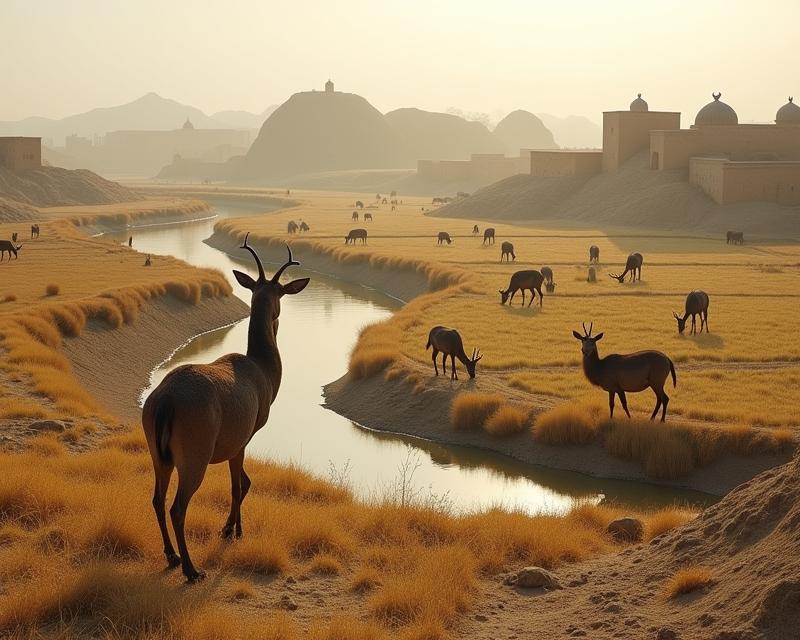Ancient Fields: Farming in Egyptian Tombs
Publish in Agriculture el 23/07/2025 16:39
Ancient Fields: Farming in Egyptian Tombs
Have you ever stopped to think about how ancient civilizations viewed the very things that sustained them – like farming? In ancient Egypt, agriculture wasn't just a way of life; it was deeply intertwined with beliefs about the afterlife. Their tomb art provides a fascinating glimpse into how farming was not only essential for survival but also a crucial part of ensuring a prosperous journey into eternity. It's a connection that resonates even today, reminding us of the enduring importance of the land.

Egyptian tomb paintings and reliefs are filled with depictions of agricultural scenes. You'll see farmers plowing fields, sowing seeds, harvesting crops like wheat and barley, and even winnowing grain. These weren't just random illustrations; they were carefully chosen to represent the deceased's connection to the land and their hoped-for continuation of a bountiful existence in the next world. The abundance depicted symbolized prosperity and a successful afterlife. Think of it as a visual wish for a fruitful eternity!
Harvest scenes were particularly prominent. These images weren't just about showing the work; they celebrated the culmination of a successful season. Offerings of grain, fruits, and vegetables were frequently shown being presented to the deceased. These offerings weren't meant to be consumed literally, but rather represented sustenance and abundance in the afterlife. They were a way of ensuring the deceased would never go hungry and would continue to enjoy the fruits of the earth. The meticulous detail in these depictions highlights the profound respect the Egyptians held for the agricultural process and its importance to their society.
Beyond the practical aspects of farming, there's a deeper symbolic meaning at play. The Nile River, the lifeblood of Egypt, is often depicted alongside agricultural scenes, emphasizing its vital role in fertility and abundance. The cyclical nature of planting, growing, and harvesting mirrored the Egyptian belief in rebirth and renewal. By including these images in tombs, the Egyptians were essentially ensuring that the deceased would be reborn into a world of plenty. It’s a powerful reminder that our connection to the land and the cycles of nature are timeless and deeply meaningful. So, the next time you're in the field, take a moment to appreciate the rich history and profound symbolism embedded in the very soil beneath your feet. It’s a legacy passed down through millennia, connecting us to the farmers of ancient Egypt and all those who have cultivated the earth before us.





